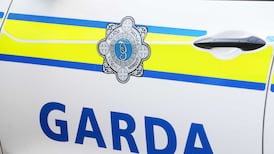Some nights Peadar Hevey hears a crash and fears that another life has been lost at one of the State's most dangerous accident black spots.
He runs a bed-and-breakfast close to Slane Bridge in Co Meath and has been the first person at the scene of too many road accidents to remember.
"I couldn't put a number on it," he says. "I've seen more than 20 accidents. There must have been around 20 fatalities here in the last 20 to 30 years. We see most of them because we're just on the doorstep.
"If we hear a crash, my wife, Mary, and myself don't even go down to the bridge until we've dialled 999."
It was Mr Hevey who called the emergency services when a crash claimed the life of two-year-old David Garvey in February of this year. The boy was killed when the car his mother was driving was crushed under the wheels of a lorry. David's death brought to 11 the number of people killed on the bridge in as many years.
The narrow one-way stone bridge is the only Boyne crossing on the N2, and thousands of vehicles use it each week, many of them heavy goods vehicles. In the aftermath of the tragedy, Mr Hevey chaired the first meeting of the Slane Bridge Action Group, which has since lobbied the National Roads Authority successfully for road improvements.
"They may prevent more fatalities, but it's not going to prevent accidents altogether. Time will tell, and all we can do is hope," said Mr Hevey.
Earlier this week the body of a 31-year-old man was found in a car embedded in the wall of the Slane Castle demesne.
However, accidents are not confined to old roads which cannot cope with heavy volumes of traffic. Stretches of modern, straight roads throughout the State have also become known as black spots.
The stretch of the main Dublin- Belfast road near Dundalk continues to claim a disproportionate number of lives. Of the 415 fatalities on the roads last year, 57 occurred in the Louth-Meath area.
Hoping to avoid another year of bloodshed, garda∅ placed the wreckage of a dozen cars along a quarter-mile stretch of the road north of Dundalk in January. However, just a month later three people were killed when the car they were travelling in smashed into a lorry five miles north of Dundalk.
The young woman who died, Ms Marguerita McShane, had celebrated her 18th birthday the previous day. At the scene, a Garda spokesman said the car was so badly mangled "it looked like the aftermath of a car-bomb. It was absolutely horrific".
In October last year four teenagers were killed when their car crashed into a ditch at Faughart Lower, two miles north of Dundalk, Co Louth.
There has been a succession of fatal accidents over the years on the Cork-Limerick road, particularly on the Cork-Mallow section. At least 14 people have died on the stretch in recent years.
One of the worst accidents claimed the lives of four people in October 1999. Ms Carmel Conroy (21) died with her 21-month-old baby, Emma, following a collision near Mallow. Ms Conroy's best friend, Ms Niamh O'Herlihy (19), and her sister, Anita (17), also died.
A local priest, Father Patrick Twohig, was a friend of the women who died and officiated at their funerals. He said there had been a double accident this week close to the spot where his friends died.
Some traffic-calming measures had been implemented in the area, but "you can't block the whole country in order to stop people killing one another".
The traditional black-and-white accident black spots signs are no longer erected to warn drivers about dangerous stretches of road, according to Mr Harry Cullen, senior project manager with the National Roads Authority. "In the last 10 to 15 years we've steered away from putting them up. There's now a more pro-active approach," he said.
Changes in road layout, junction control and improvements in road markings are among the measures now implemented in an attempt to cut down accident levels.
Mr Cullen said increased traffic in rural areas put greater pressure on accident black spots, with around 60 per cent of last year's fatal accidents occurring in rural areas.
The NRA, which will spend £14.5 million on road safety initiatives this year, issued a report in August detailing the effectiveness of the initial phase of its remedial measures programme. It said work had been completed in 128 locations on national roads in 1994 and 1995, reducing the number of fatal injury accidents by 25.







